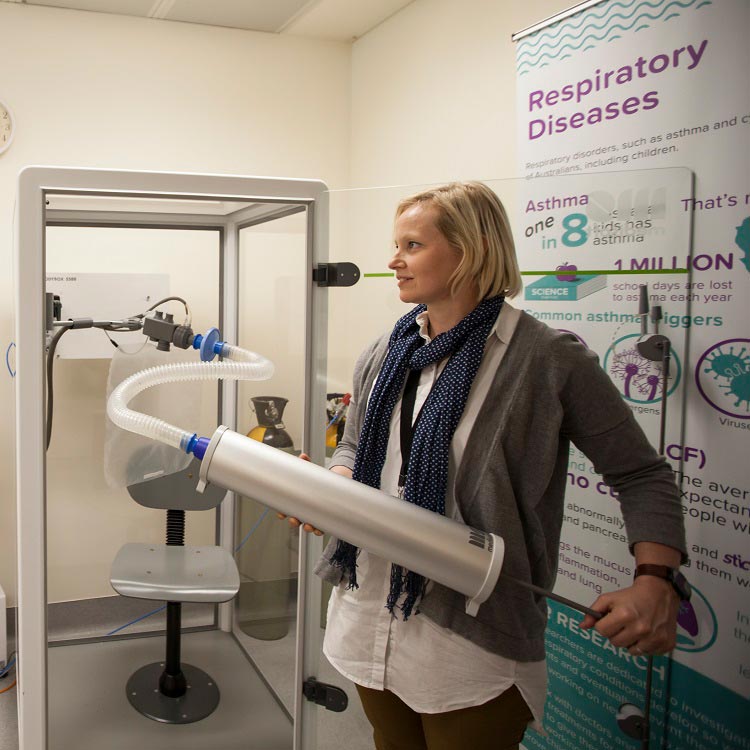Search
Research
COVID-19 monitoring with sparse sampling of sewered and non-sewered wastewater in urban and rural communitiesEquitable SARS-CoV-2 surveillance in low-resource communities lacking centralized sewers is critical as wastewater-based epidemiology (WBE) progresses. However, large-scale studies on SARS-CoV-2 detection in wastewater from low-and middle-income countries is limited because of economic and technical reasons.
Research
Biodiesel Exhaust Toxicity with and without Diethylene Glycol Dimethyl Ether Fuel Additive in Primary Airway Epithelial Cells Grown at the Air-Liquid InterfaceBiodiesel usage is increasing steadily worldwide as the push for renewable fuel sources increases. The increased oxygen content in biodiesel fuel is believed to cause decreased particulate matter (PM) and increased nitrous oxides within its exhaust.
Research
Phage therapy could be key to conquering persistent bacterial lung infections in childrenPersistent bacterial lung infections in children lead to significant morbidity and mortality due to antibiotic resistance. In this paper, we describe how phage therapy has shown remarkable efficacy in preclinical and clinical studies, demonstrating significant therapeutic benefits through various administration routes.
Research
Exploring the Complexity of the Human Respiratory Virome through an In Silico Analysis of Shotgun Metagenomic Data Retrieved from Public RepositoriesRespiratory viruses significantly impact global morbidity and mortality, causing more disease in humans than any other infectious agent. Beyond pathogens, various viruses and bacteria colonize the respiratory tract without causing disease, potentially influencing respiratory diseases’ pathogenesis.
Research
Successful establishment of primary small airway cell cultures in human lung transplantationThe study of small airway diseases such as post-transplant bronchiolitis obliterans syndrome (BOS) is hampered by the difficulty in assessing peripheral airway
Research
Decreased fibronectin production significantly contributes to dysregulated repair of asthmatic epitheliumIn human asthma, and experimental allergic airways disease in mice, antigen-presenting cells and CD4(+) effector cells at the airway mucosa orchestrate, and CD4
Research
Cultures of HRV-C for investigations of pathogenesis in childrenAnthony Belinda Ingrid Kicic Hales Laing BSc (Hons) PhD BSc (Hons) PhD BSc PhD Rothwell Family Fellow; Head, Airway Epithelial Research Senior

News & Events
Very preterm babies at risk of declining lung function throughout childhoodA The Kids Research Institute Australia study published in The Lancet Child & Adolescent Health has found that survivors of very preterm birth face declining lung function
Research
Identifying SETBP1 haploinsufficiency molecular pathways to improve patient diagnosis using induced pluripotent stem cells and neural disease modellingSETBP1 Haploinsufficiency Disorder (SETBD) is characterised by mild to moderate intellectual disability, speech and language impairment, mild motor developmental delay, behavioural issues, hypotonia, mild facial dysmorphisms, and vision impairment. Despite a clear link between SETBP1 mutations and neurodevelopmental disorders the precise role of SETBP1 in neural development remains elusive.
Research
Treatment with inhaled aerosolised ethanol reduces viral load and potentiates macrophage responses in an established influenza mouse modelTreatment options for viral lung infections are currently limited. We aimed to explore the safety and efficacy of inhaled ethanol in an influenza-infection mouse model.
